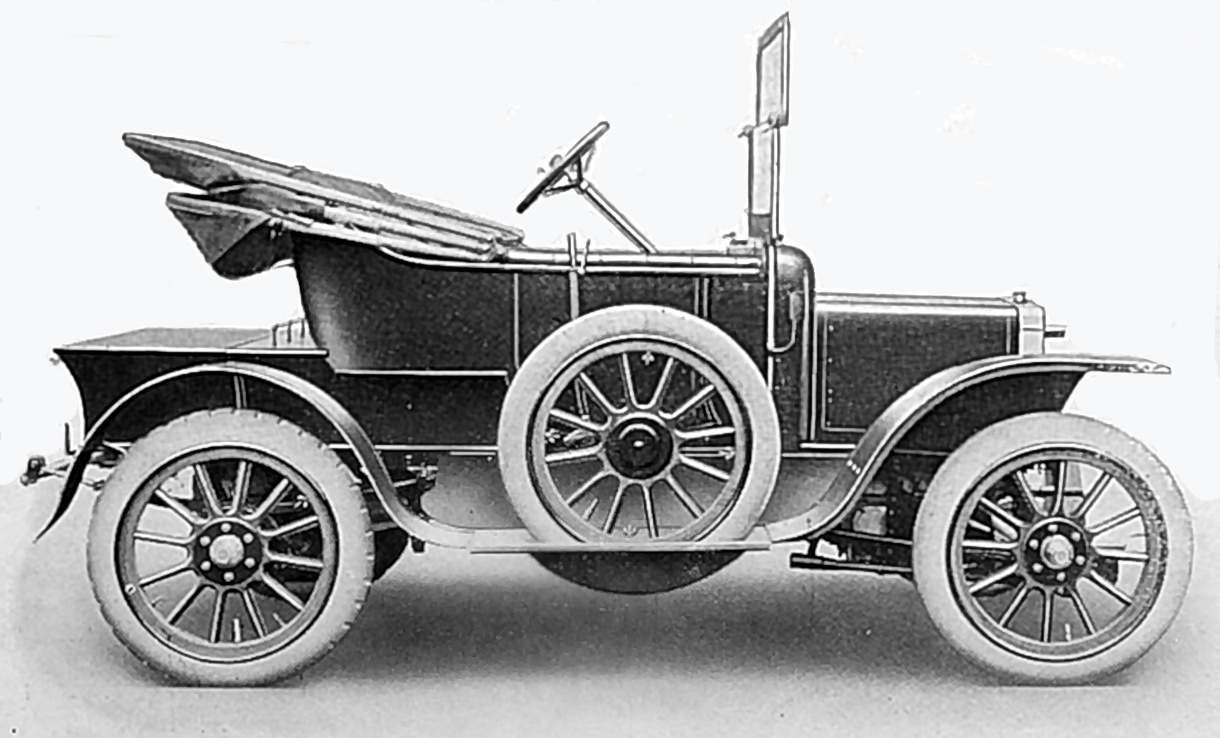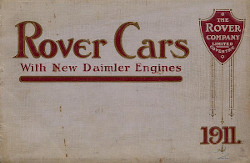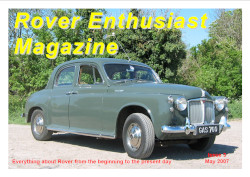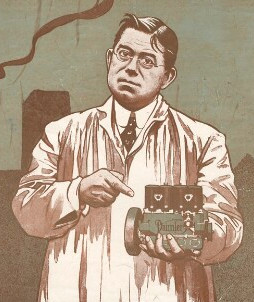
ROVER 8 hp 'Knight'
With small single cylinder engine
1911 - 1912
The illustration of the ROVER 8hp with 'Knight' sleeve-valve engine is taken from catalogue 1911.
With the use of sleeve valve engines Rover jumps on the " time spirit train " of the Knight engine. The sleeve valve engine developed by the US American Charles Yale Knight (1868 - 1940) from 1903 onwards and developed to series maturity by 1907 was patented in Great Britain in 1908 and in the USA in 1910. Knight was a gifted marketer of his patent, almost all well-known automobile manufacturers built engines of this type for some time. As the engine power - and thus the engine speeds - increased, the design principle came to its limits. In addition, it became apparent that Knight engines had a strong tendency to soot. At Rover, after two model years, the company decided not to use the engine and returned to the tappet valve engine.
Nevertheless one should read with which euphoria the new engine was praised.
 The introduction of „Rover“ Cars, equipped with Twin-Cylinder and Single Cylinder Engines of the now famous New Daimler type, marks an epoch in the history of motoring and motor construction. The New Daimler engine introduced some two years ago was a radical departure from existing types which was received with considerable doubt. But its success was quickly won. A large number of cars were sold to the public during its first season, and the engine came through with flying colours its great test under the auspices and observation of the Royal Automobile Club. This trial was unprecedented in its severity, and its value was increased by the facr that the actual conditions were arranged by the Committee of the Club on their own initiative. In the space of a fortnight the engines were subject to more hard work than they could possibly receive in two years running under normal conditions, and they came through this ordeal with complete success. A further indication of the merits of the ‘New Daimler Engine is to be found in the list of purchasers. (Note. The list fills a whole page of Rover's 1911 catalogue - including numerous kings and nobles.)
The introduction of „Rover“ Cars, equipped with Twin-Cylinder and Single Cylinder Engines of the now famous New Daimler type, marks an epoch in the history of motoring and motor construction. The New Daimler engine introduced some two years ago was a radical departure from existing types which was received with considerable doubt. But its success was quickly won. A large number of cars were sold to the public during its first season, and the engine came through with flying colours its great test under the auspices and observation of the Royal Automobile Club. This trial was unprecedented in its severity, and its value was increased by the facr that the actual conditions were arranged by the Committee of the Club on their own initiative. In the space of a fortnight the engines were subject to more hard work than they could possibly receive in two years running under normal conditions, and they came through this ordeal with complete success. A further indication of the merits of the ‘New Daimler Engine is to be found in the list of purchasers. (Note. The list fills a whole page of Rover's 1911 catalogue - including numerous kings and nobles.)
The Single and Twin-Cylinder engines which have been adopted for use on „Rover“ Cars have, like their predecessors, been under most severe tests for a very considerable period, and we put forward the two new models described in this catalogue with every confidence that they will uphold the „Rover“ reputation for reliability, smoothness of running, and small running costs."
Since the introduction of the 8 hp "Rover" in 1904, over 3,000 units have been built, practically all of which are still on the road. For the 1911 season, a new model is presented equipped with an 8 hp new single-cylinder engine by Daimler. This sleeve valve engine develops 9 hp at normal operating speed. The average fuel consumption is 35 miles per gallon. Since the bore of the engine is only 101.5 m/m, the tax on the car is only £2 2s.
The engine requires some technical modifications. The previously customary design principle of the uniform block for engine, clutch and gearbox cannot be retained. Engine and clutch remain connected, the gearbox, with modified transmission ratio, is connected via a universal joint. The previous band brake acting on the cardan shaft is no longer required, the handbrake and foot brake now act on separate drums on the rear axle. Because of the differently placed starting crank, the heart-shaped radiator, which had become common on other Rover models, could not be mounted. The body corresponds to that of the valve controlled 8 hp.
| Sources | |
|---|---|
 | ROVER Catalogue 1911 Cars with "Knight" engines |
 | Rover Enthusiast Magazine James Taylor, 2007-03 |
 | 1908-1914 Motor Car Red Book |

Charles Yale Knight, 1909
© National Portrait Gallery London
Knight proudly shows the 'Daimler'-two-cylinder, which is built under license according to his patent.
You can find a short biography ⇒ here
© 2021-2026 by ROVER - Passion / Michael-Peter Börsig

 Deutsch
Deutsch